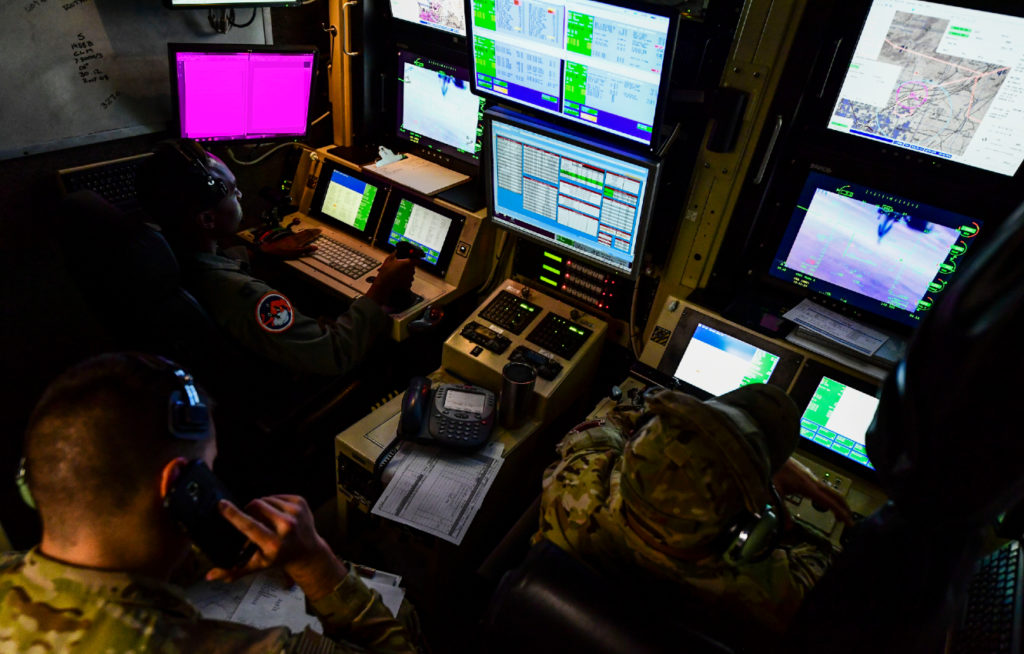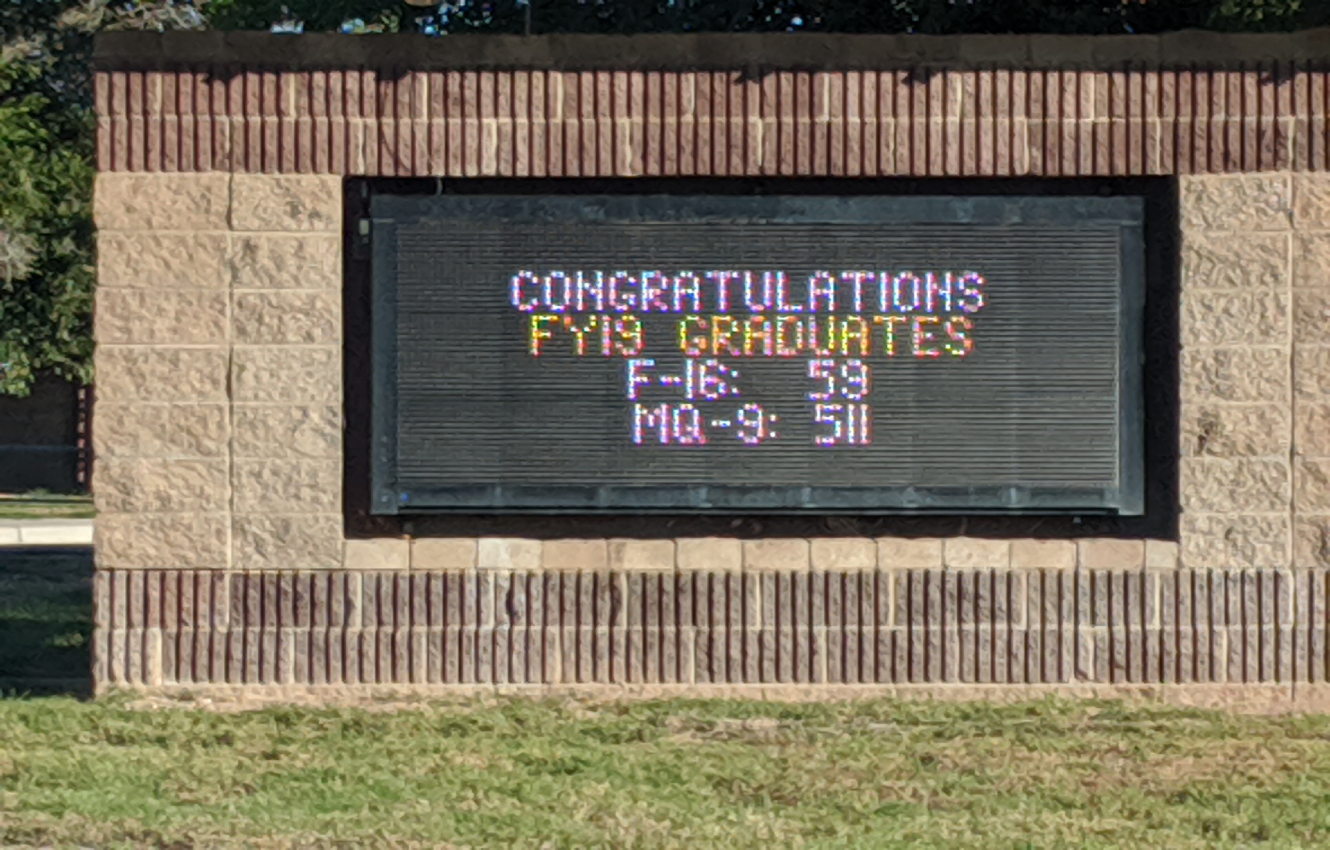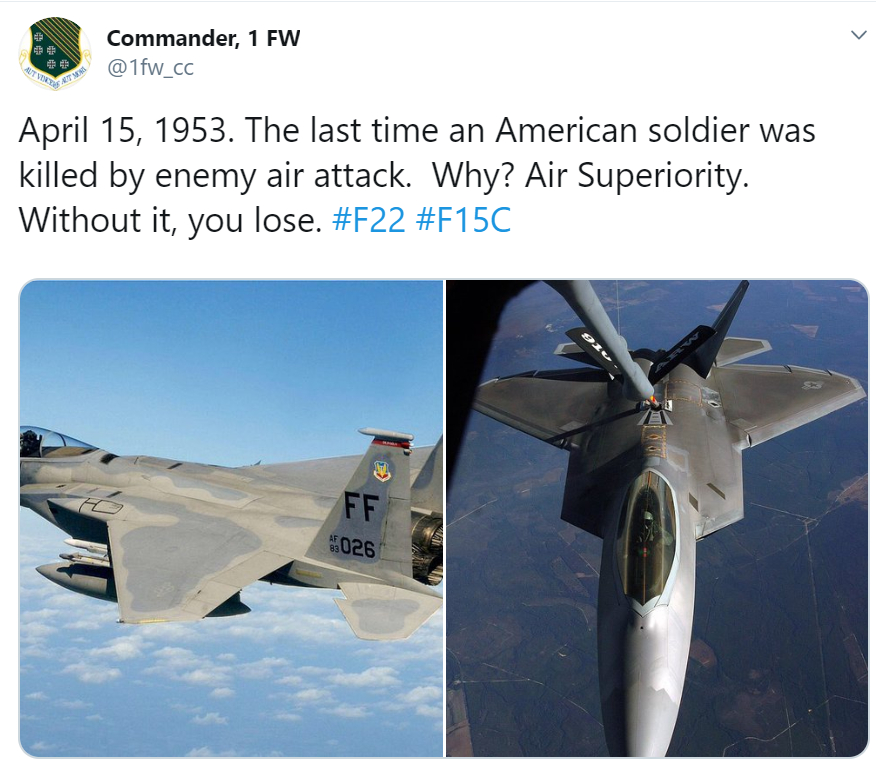Synchronizing Change and Air Force Culture: Modernization and the Dirty Secret of Aircrew Shortages

A few weeks ago, I sat in an audience of about a hundred aircrew, listening to a senior Air Force commander speak about pilot production shortfalls. The general was articulate, sincere, and sympathetic about why pilots are leaving the service. He didn’t hold back in expressing dissatisfaction with the practices the Air Force uses to train pilots — they were historically effective, but lack the agility required to meet the service’s modern-day needs. The general argued that the system is an assembly line with no individualized assessments or tailored use of resources. At the end of the line, graduates receive one of a host of three-digit specialty codes. The personnel system, in turn, sees only codes, not an inventory of a person’s actual abilities. When the personnel and training systems try to interact — for example, when trying to retrain an airman from one crew position to another on the same aircraft — they are remarkably poor at recognizing experience overlaps and interchangeable skillsets.
Then something really interesting happened. Taking a cue from the general, a colonel in the audience offered an outside-the-box solution — retraining crews of remotely piloted aircraft to fill needs in fighter aviation. Suddenly, the general’s willingness to explore new ideas vanished. He dismissed the suggestion, curiously, by referencing constraints of the existing training pipeline he just proposed replacing for its myriad deficiencies. He concluded, “there’s no shortage of young people out there who want to fly airplanes for us.” Why did the principles hold when the general considered them within the context of the fighter community but collapsed when applied more broadly?
To successfully modernize and address its pilot shortage problem, the U.S. Air Force needs to reconcile the need to change on the one hand, and, on the other, constraints that a rich, deeply felt service culture impose when new ideas contradict lessons derived from decades of group learning. Ignoring uncomfortable evidence to protect shared cultural assumptions is risky. Narrow assumptions about what the Air Force wants are not identical to the Air Force that the country needs in an evolving political, strategic, social, and technological context.
Dirty Secrets
The dirty secret of Air Force modernization is that arguments against integrating remotely commanded warplanes like the MQ-9 Reaper into major theater combat are circular. The Air Force seems intent to simply refuse to purchase or integrate commercially available modifications that would answer each of the concerns, then claim the aircraft are not viable. The dirty secret of aircrew shortages is that the relative proportions of qualified aircraft commanders in the combat air forces has been shifting toward remotely commanded systems for a decade. When the Air Force reported it was short 1,200 fighter pilots, it failed to mention that it had simultaneously gained almost as many pilots for its remotely commanded attack aircraft. One member of Congress noticed the omission almost immediately. The Reaper now hosts the largest tactical aviation community in the Air Force.
The uncomfortable question the Government Accountability Office raised is whether the Air Force was ever actually in an overall shortage condition, or whether it was undergoing a period of monumental transitions (that it perhaps would rather not undergo). The congressional watchdog suggested the Air Force reevaluate the needed volume of fighter units given the prevalence of remotely commanded attack aircraft. The Defense Department concurred with the recommendation, but the Air Force continues trying to grow the fighter enterprise and attempting to cut the remotely commanded systems from defense budgets.
The service tried producing its way out of pilot shortages and cannot close the gap even at surge levels of effort. The effectiveness of retention incentives worsens year after year, and yet airline hiring demands have not even hit peak intensity. The literal writing on the wall in the image below illustrates the reality of the Air Force’s situation. While the fighter enterprise’s population continues to decline, the Reaper schoolhouse substantially outproduces the largest fighter schoolhouse.
Image: Public view from the entrance to Holloman Air Force Base, New Mexico. Source: Photo taken by the author.
Source: Photo taken by the author.
Decoding Air Force Organizational Culture
No military leader wants to create unnecessary risk for the nation. The Air Force’s change-resistant behaviors are a function of assumptions that shape the service’s culture. Edgar Schein defined culture as “learned patterns of beliefs, values, assumptions, and behavioral norms that manifest themselves at different levels of observability.” Culture, he argued, consists of visible evidence (artifacts, observed behaviors, processes, etc.), espoused beliefs and values, and basic underlying assumptions. Schein cautioned that the visible artifacts are “easy to observe and very difficult to decipher.”
In the Air Force’s context, the following Twitter post from a fighter wing commander provides a great example of a cultural artifact conveying an espoused belief:

Source: Official Twitter account of the 1st Fighter Wing Commander.
The tweet reflects traditional indoctrination for pilots entering the F-15 and F-22 communities. The claim, however, is substantively false: The correct date is September 11, 2001. The failures of that day certainly stretched far beyond a single government agency. Nevertheless, for a brief moment the Air Force lost air superiority over the continental United States, but not for a lack of stealth aircraft, talented pilots, or exquisite tactics. Rather, an adversary out-conceptualized the world’s premier air service regarding the boundaries of what constitutes air attack.
Certainly, the airmen reciting this line never meant to disrespect those lost on 9/11 or their surviving families. The claim is part of a constructed history whose beliefs include the perceived indispensability of fighter aviation, demands for excellence, and membership in a world-class team. Each of those ideas can be inherently positive. If they become exclusive articles of faith baked into unquestioned assumptions, however, the drive for elite performance can metastasize into simple elitism.
I recently listened as a captain articulated the assumptions underpinning these beliefs to a squadron commander (who, in turn, nodded in agreement). “You know how it is, sir. From the people coming out of pilot training, you’ve got your T-38 grads going to fighters, then those going to bombers, then a range of T-1 grads going to different heavies, and whatever after that.” I heard a similar explanation from advisors and mentors (who also happened to be fighter pilots) over a decade ago. One way to formalize this low-level assumption is to label it “belief in a linear hierarchy of merit.”
The essential claim is that, through fair competition, flight school outcomes (and in turn, membership in occupational communities associated with specific aircraft) provide a reliable proxy for sorting out status, leadership potential, and tactical ability. The underlying (unspoken) assumptions reflect a need to believe in prescribed rites of passage, high bars for admission, and a right to special status in fighter aviation as a result of meeting the highest qualification standards. These cultural elements frame a shared identity that supports high performance, tactical excellence, and mitigation of aviation mishaps. A practice of cross-flowing personnel on the basis of the interchangeability of tactical skillsets might appear to that shared identity as introducing foreign cultural DNA.
Exploring Assumptions About Hierarchy
There are four fatal problems with the assumed existence of a linear “pecking order” in the Air Force as a social and professional sorting mechanism. First, it assumes everyone has (or should have) comparable goals. If the student with the highest marks wants to fly AC-130 gunships, for example, rather than fighters, the model’s assumptions break down. Second, it disregards the continuous accumulation of skills and abilities that occurs after initial training. Third, it ignores clinical studies like those from the Air Force’s School of Aerospace Medicine that found no appreciable cognitive differences between remotely piloted aircraft pilots and pilots of legacy weapon systems. The raw potential for two groups that should be on the opposite ends of a hierarchy is actually equivalent. Fourth, it cannot explain equivalent performance outcomes when people from the assumed top and bottom of the linear hierarchy conduct the same combat missions, or when the relevant combat effects come from other specialists, like a cyber operations officer, altogether. However culturally sacred, the assumption of hierarchy is a distortion of reality.
That corrective is deeply offensive to those who accept the hierarchy of pilots in the Air Force. It is also disruptive to society’s attempts to reconcile the appearance of “drones” in modern warfare: There are pilots operating in remote cockpits who are better tactical aviators than the average pilot operating from a cockpit inside a fighter aircraft, and vice versa. Recognizing instances of tactical parity undermines belief in elite status. The colonel from the opening story in this article explored the viability of cross-flowing pilots from remote cockpits to conventional fighters through a tailored training process. He may have been materially correct. Perhaps, however, the general perceived hidden costs: He might fail to retain experienced fighter pilots if he suddenly renegotiated the cultural elements undergirding their community.
Tough Choices
The general’s predicament reflects the fundamental need to synchronize efforts to lead strategy and culture through changing times. The service’s most well-tested and deeply encoded shared understandings (culture) send one message, while a rapidly changing external environment sends a potentially contradictory one. If the need for stability means the former consistently wins out over the latter, the service becomes caught in a reinforcing feedback loop. A natural response is satisficing: construct acceptable answers to new material challenges in ways least incongruent with existing values. In other words, make small changes that won’t rock the boat. This insight may help explain why the Air Force responds to the explosive growth of robotics, machine learning, and digital connectivity by championing devices that complement traditional aviation without threatening its underpinnings. Fighter culture can assimilate a robotic aircraft as a “loyal wingman” more readily than designs that “virtualize” cockpits and permit crews to fly robotic warplanes from anywhere to anywhere.
The rate of technical evolution appears to exceed the rate of cultural assimilation. I suspect differences in these rates are a contributing factor to why so many incredibly talented pilots leave the service. The Air Force many airmen believed they were joining and the Air Force they encounter can be very different. The Defense Department cut the F-22 purchase dramatically short. The next mainstay fighter, the F-35, is a thematic move away from visceral air combat and toward orchestrating combat effects. Its manufacturer announced fourteen years ago that it designed unmanned variants of the plane. “Dogfighting” has become a contingency rather than a core competency — one where machines likely outperform humans. The next bomber features optional-manning technologies. The head of Air Combat Command signaled impending fundamental shifts in the role of fighter aviation. Elon Musk’s claim that, “The fighter jet era has passed,” was certainly not an endorsement of fighter cultural assumptions.
Reconciling the roles of humans and machines is not unique to the military. Yet this era of increasingly advanced robotics and autonomous systems raises a question: Which do airmen love more — airplanes or airpower? If technological changes like the advent of remote cockpits force a person to choose, which piece of the story is more important: accomplishing missions (functional) or the thrill of flight (experiential)? If the world’s major powers are indeed caught in a technological arms race, and if cultural assimilation of technology is the limiting factor of the Air Force’s ability to compete in that race, then leading the service to a better future requires both strategic and cultural insight.
The service has at least two broad leadership choices going forward. On the one hand, it can prioritize preserving cultural values and attempt to interpret technology through compatible lenses. However, this approach risks failing to leverage those technologies and permitting adversaries to capitalize on the error. The French pioneered cutting-edge naval designs in the late 19th century, yet their admiralty found projects like the submarine culturally revolting and allowed the advantage to pass to their German rivals.
If the United States fares no better with robotic warfare than the French did with the submarine, the Air Force would continue trying to build a fleet with the fighter as centerpiece, rather than simply a component of a diverse network-integrated system. Meanwhile, it would try to clear its inventories of systems that use remote cockpits, like RQ-170s and MQ-9s, and decline to purchase replacements. It would parlay cultural aversion to the system architecture into claims that the systems themselves are only suitable to countering violent extremist organizations, unable to fill integral roles in major combat operations against peer states.
On the other hand, leaders might recognize that placing the nation’s proverbial eggs in few baskets — focusing defense investments on culturally compatible weapon system designs — only simplifies adversary planning processes. Creating operational unpredictability requires creative use (and reuse) of diverse options. For example, they would realize that while using a laser-guided rocket from a fighter to intercept a cruise missile is a great accomplishment, it would make even more sense to repurpose existing robotic aircraft that can loiter for upwards of a day for the task, freeing more fighters for offensive action.
Paradoxes
The Air Force’s pilot shortage is simultaneously real in its own right and yet an illusory symptom masking deeper transformative forces acting on the institution. Existing training and personnel systems do the service few favors. Yet it is not only the operating procedures and literal enterprise software systems that require attention — the assumptions buried in the Air Force’s cultural programming must be synchronized with modernization strategies in order to be effective.
The general described at the beginning of this story was caught in an apparent paradox — move forward on a human capital idea and Air Force culture makes the material outcomes worsen, or do what the culture wants and the material outcomes continue to degrade.
The problem is a function of excessive subdivision. The Air Force divided human capital into three-digit codes until its results deviated from any useful reality. Subdividing people into groups partitioned the operation of shared learning processes, forming subcultures and tribal identities. If your group gave you the podium, where would you stand when you needed to deconstruct it? How do you lead people in a way that re-syncs culture to evolving strategies? It is unclear what effort the Air Force expends to prepare leaders to achieve such synchronization.
What is clear is that the U.S. Air Force is an instrument of national power operating in a protean environment. The age of robotic, autonomous, globalized, cyber-physical warfare seems particularly intolerant to the error of loving airplanes more than airpower. Leaders throughout the institution should do the hard work of identifying what shared assumptions have become shared blind spots. Some of those assumptions may still be extremely valuable, while others may be outdated. Leaders either learn to shape culture, or as the example of the general in this story demonstrated, culture will shape their decisions in ways that become self-limiting.
Maj. Mike Byrnes serves as an assistant director of operations in the 54th Operations Support Squadron, 54th Fighter Group, 49th Wing, Holloman Air Force Base, New Mexico. He is a distinguished graduate of the U.S. Air Force Academy, holds a Masters of Science in Information Technology with highest academic distinction from Carnegie Mellon University, and a PhD in International Relations from the Fletcher School at Tufts University.
The views expressed are those of the author and do not necessarily reflect the official policy or position of the Department of the Air Force or the U.S. Government.

